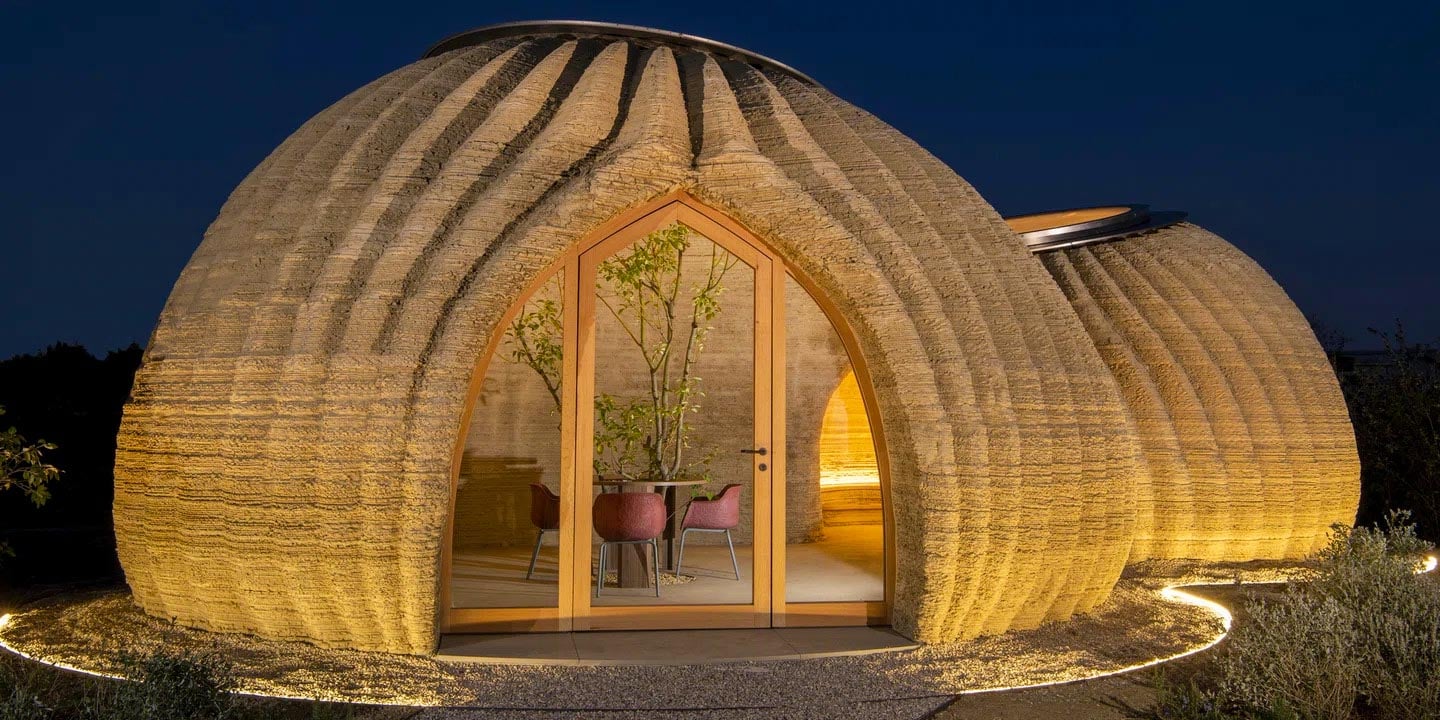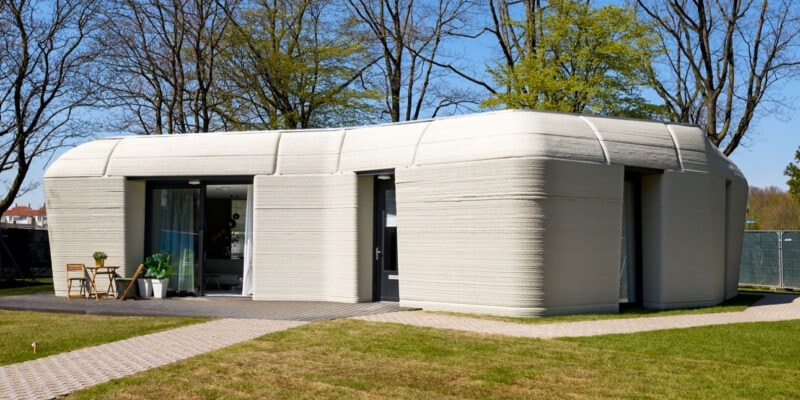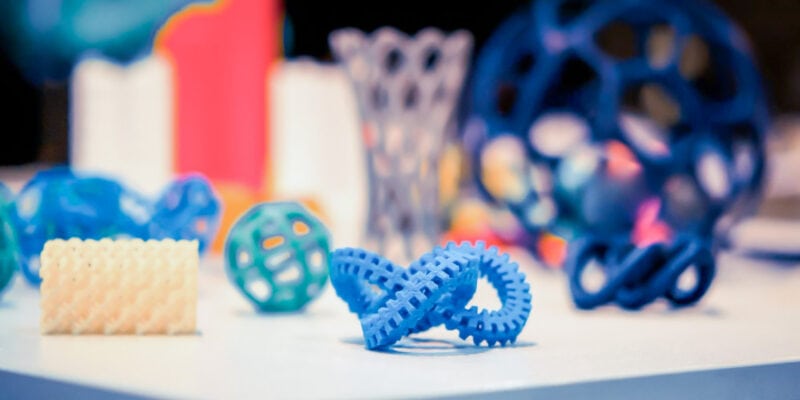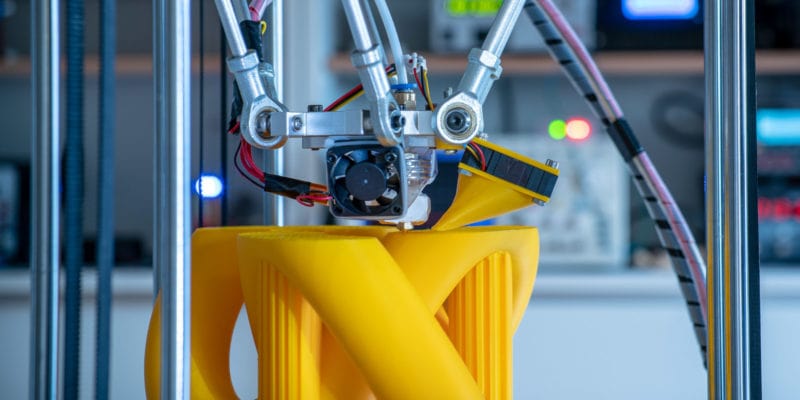The number of 3D printed houses available currently is scarce. But, many companies are working actively to make 3D printed houses a reality for the masses. Some of these mass-produced 3D printed houses will be available in the next 5-7 years.
A decade ago, 3D printed houses were in their nascent stages, and barely a few firms had prototype projects. Comparing the past’s situation with today’s, you’ll realize that a 3D printed house is more of a reality now. It is an upcoming and excellent alternative to conventional construction techniques that is a cost-effective solution in our current housing market.
In this article, we’ll go over a few of the prominent 3D printed housing projects that promise to provide sustainable and actual housing using 3D printing. We will also touch on when these houses will be commercially available to the general public.
Read on to learn more about 3D printed buildings and when 3D printed houses will be available on the market.
When Can You Buy a 3D Printed House?
The reality of buying a 3D printed house is much closer than you can imagine. Due to advancements in construction materials and additive manufacturing technologies, there are many companies that are already developing entire townships by 3D printing concrete.
Firms like Apis Cor, SQ4D, and Alquist are developing their 3D printed housing communities, of which the first houses will go on sale in the next 5-7 years. SQ4D even listed the first 3D printed house for sale in 2021. A significant milestone that has brought us one step closer to the commercialization of 3D printed homes.
The History of 3D Printing in Construction

3D printing in commercial construction was introduced first by Dr. Behrokh Khoshnevis of the University of Southern California. The Contour Crafting Project from the 2000s is the first documented application of normal concrete 3D printing. This project exhibited the use of 3D printing in the construction industry and led to all further developments.
In 2005, Saint-Gobain Weber Beamix B.V. 3D printed the first wall using concrete, measuring 10 x 7 square feet (3 x 2 m²), and it was completed in around 2.5 hours. Later, in 2014, the Chinese firm Winsun demonstrated its 3D printing capabilities by 3D printing ten 33 x 22 sq ft. (10 x 6.6 m²) houses in a single day.
The following year, Winsun marked another milestone in 3D printing construction by 3D printing an entire building. The 5-story building has approximately 11,840 square feet (1,100 m²) of floor space.
A unique element in the apartment’s construction was that all the components were fabricated off-site at Winsun’s facility. Later on, these were assembled on-site with all the other building materials. This technique set a good precedent for constructing a building elsewhere and completing it on the site.
Other prominent projects are Dubai municipality building, built in 2016, and Apis Cor’s first residential house in 2017. Several additional projects happened during the 2010-2020 period, which laid the foundation for 3D printed homes that are currently available.
3D Printed Houses Available For Sale Today
SQ4D house

SQ4D’s 3D printed house is currently for sale at 34 Millbrook Ln, Riverhead, NY. It is one of the earliest 3D printed structures for sale, and SQ4D has listed it on Zillow for a total cost of $299,000.
It’s a 1400 square foot (130 m²) property with three bedrooms, two baths, and a two-car garage space. The entire house is built out of concrete using SQ4D’s Autonomous Robotic Construction System (ARCS). The overall construction of the house took a little under 48 hours and was created with the help of solely three workers.
According to SQ4D, the 3D printed house cost is 40% less to build than using traditional construction methods. Additionally, you save significantly on labor liabilities, fuel costs, and construction time.
The SQ4D’s house is an excellent example of a livable 3D-printed house and shows the viability of using a 3D printing concrete in construction.
Project Virginia
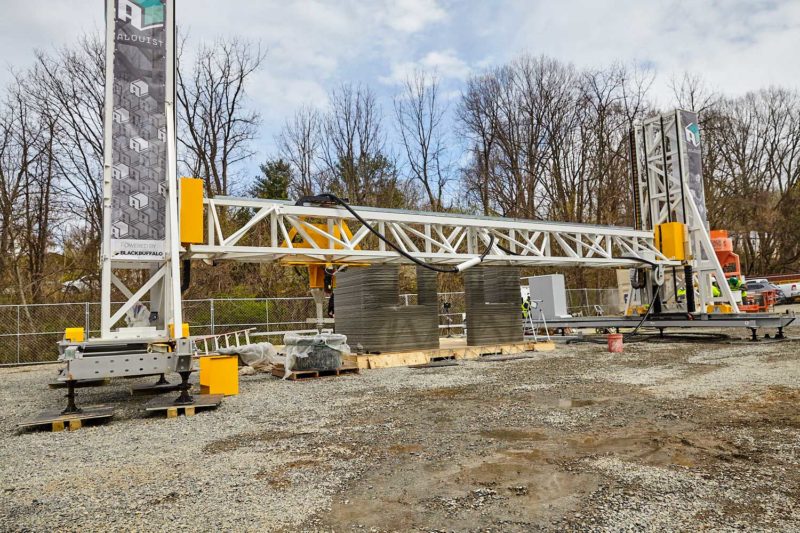
Alquist3D plans to build around 200 3D printed houses in the Pulaski town of Virginia. These houses are going to be built in a period of three to five years and will be completed in two separate phases. According to the firm, there will be four designs for these houses, with their finished costs ranging between $175,000 and $350,000.
In phase one of the project, Alquist will construct a 1280 sq ft. (119 m²) 3D printed home on 10,000 sq ft. (929 m²) of land on Pierce Avenue Pulaski, VA. The property will be a single-story house with three bedrooms and two bathrooms. Once this is accomplished, Phase two includes the construction of 55 to 72 additional housing units on 20 acres of land.
You can expect most of these houses to be built by the end of 2022 and the entire housing project to be completed by 2027. These 3D-printed houses are almost similarly priced to houses with conventional construction in the area. However, the main benefit lies in their lesser construction time and labor requirements.
This is a pretty big project and could lay the groundwork for other such developments in other states as well. Once completed, it could set a new benchmark for 3D printed buildings in terms of both price and quality.
The Milestone Project
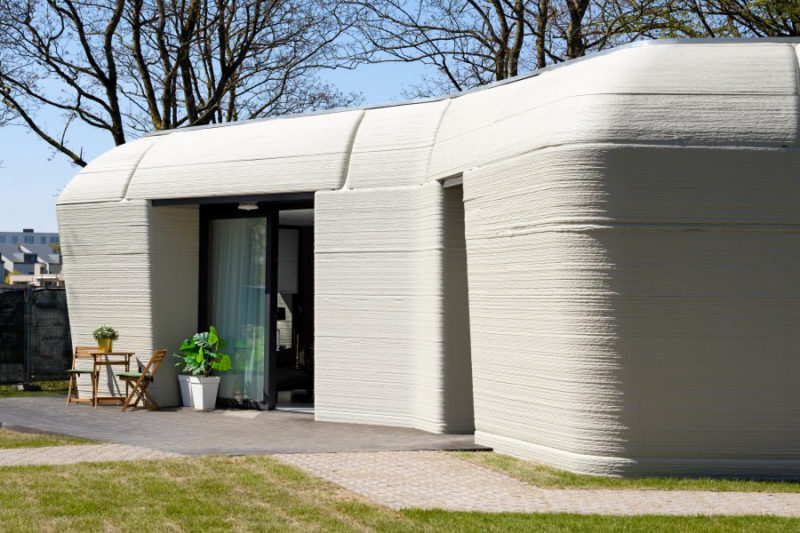
The Milestone Project in Eindhoven, Netherlands, comprises five 3D printed houses, of which the first one’s already been completed and sold. A Dutch couple has rented out the house since last year, with its rent costing around €800.00 ($810).
The firm Weber Beamix is building this project in partnership with Eindhoven City council, Van Wijnen, Eindhoven University of Technology, Vesteda, Witteveen+Bos. This project aims to show that it is possible to use 3D printing technology for building housing that is sustainable and affordable.
This boulder-shaped house made headlines in May 2021, as the elderly couple moved into the first habitable 3D printed house in the Netherlands. The 1000 square foot (93 m²) house is a single-story property and comes with a spacious living room and two bedrooms, with all amenities included.
The rest of the four new buildings are planned to be multi-story properties with up to two floors. All these houses will be shaped like stones, and the partners involved in this project plan to make these houses look as futuristic as possible.
Although there’s no clarity on the final pricing of these 3D printed homes, they’re expected to be finished by 2027. This puts the project in line with many other such developments, which are all scheduled to be completed in the next few years.
East 17th Street Residences

The East 17th Street Residence is a complex of four 3D printed luxury houses built by ICON in East Austin, Texas. All four units have already been sold off, and the prices of these houses were upwards of $400,000.
All the houses are multi-story and have slightly different designs and floor spaces. The smallest of these homes comes with a 952 square foot (88.4 m²) area, two bedrooms, and 1.5 bathrooms. In contrast, the largest 3D printed house is a four-bed and four-bath property with 1928 square foot (179 m²) of livable space.
Each home has car parking, a private yard, an advanced HVAC system, and other premium amenities. Although none of these houses are for sale right now, these houses exhibit the premium end of 3D printed homes. Compared to the other houses featured on this list, these homes are quite expensive.
ICON’s 100 3D Printed Homes
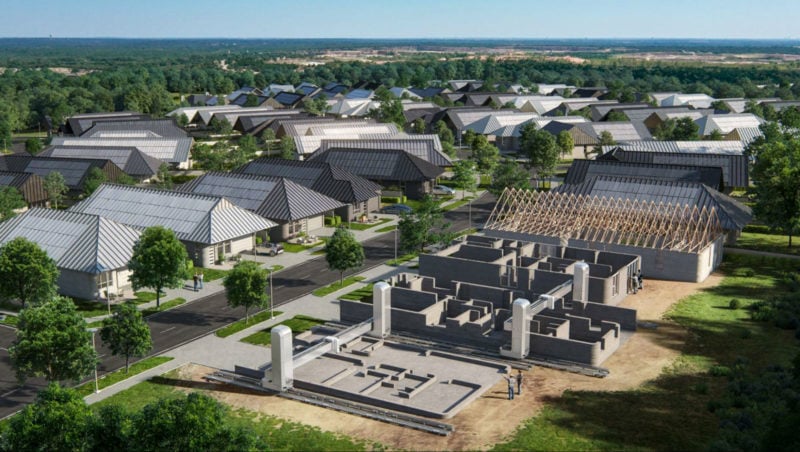
ICON, in collaboration with the Lennar group, has recently announced its plans to build a community of 100 3D printed houses in Austin, Texas. The details of this project are unknown, except that Bjarke Ingels Group will design these houses.
Given the large number of units and the advanced construction techniques, these houses might cost less than the East 17th project. Overall, this project is worth looking out for, and it should be one of the largest 3D printed communities (next to Alquist) that can provide sustainable 3D printing housing.
Community First! Village

The Community First! Village is ICON’s other 3D printed housing project that provides affordable and sustainable housing for the homeless people in Austin, Texas. Built in a collaboration with Mobile Loaves & Fishes, this is a first-of-its-kind project for the homeless in America.
Each house constructed in the Village will be a 400 sq ft. (37 m²) property with a single bed, bathroom, and all the living amenities. The first house was built in 2019, and ICON plans to build a slew of affordable and sustainable homes for the underprivileged.
The houses are technically not listed for sale; however, one can apply for a home if they meet the Village’s criteria. That being said, the Community first! Village is a prime example of how 3D printing technology can be used to help those in need.
What Are the Benefits of a 3D Printed Home?
Though 3D printing in construction is a relatively new concept, it is widely becoming the norm for building new houses due to its inherent benefits. Let’s understand some of the benefits associated with 3D printed homes.
Cost-Efficient
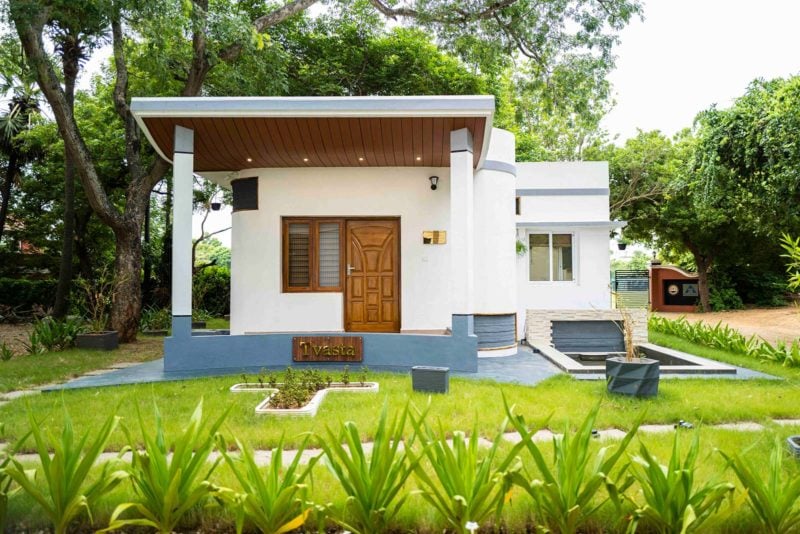
3D printed houses save costs on construction, labor, time, and building materials. All these factors ultimately result in the lower overall pricing of a 3D printed home. According to SQ4D, it costs them up to 40% less to build 3D printed structures compared to using traditional methods.
The 3D printing process is highly efficient, requires minimal labor, and needs less electricity and fuel during construction. This lets you save money on construction costs and instead spend it on other important things like the interior of your house or the furniture.
Additionally, due to the flexibility of the 3D printed houses, you can 3D print a building with a complex design for a lower price. These cost savings give you the flexibility and freedom to build your dream home without breaking the bank.
Reduced Construction Time
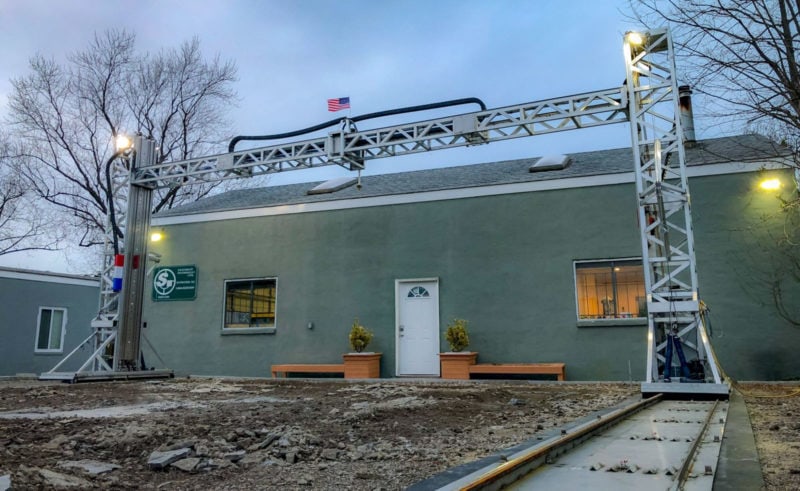
You can construct a 3D-printed house in days instead of weeks. For example, the houses in Alquist’s Virginia Project can be built in 24 hours per house. Similarly, the SQ4D’s house was 3D printed in under 48 hours. Another example is Dubai’s Killa Design PMO office, which took 17 days and saved about 50-70% in building time.
Taking SQ4D’s data, their ACRS technology can print concrete at a speed of 400 – 700 inches per minute. Also, because a robot is doing the work, you don’t need to give it any breaks. 3D printing 24 hours straight is not a problem, provided the weather conditions are favorable.
Alternatively, when building multi-story 3D printed buildings, you can print each floor simultaneously off-site. Then, you can transport these floors to the construction site and stack them on top of each other. This will further reduce the construction time as there is no need to wait for one floor to dry before starting with the next.
This parallel construction technique can result in significant time savings, further reducing the project’s overall cost.
Design Freedom
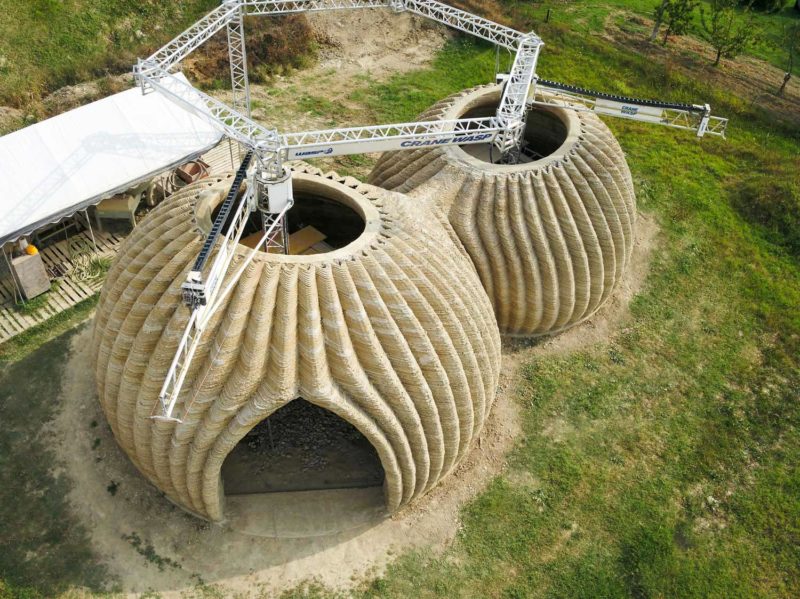
3D printed houses are less dependent on construction techniques and the skill of manual labor. As long as your material holds up and is structurally sound, you can design and 3D print houses in various shapes. This gives you more design freedom in the final looks of your home.
The Milestone Project of the Netherlands is a great example that showcases modern design in construction. The houses are made to resemble stones and look outwardly at first glance. This level of design freedom is a lot more difficult with traditional construction methods.
Another unique housing design is from WASP in their 3D-printed clay house – Tecla. The 3D-printed home has walls with a distinctive shape that gives the structure strength while providing natural ventilation to the house’s residents.
Who Will Benefit the Most From 3D Printed Houses?
Post Covid-19, the prices of traditional houses rose by up to 13.5% in the US. In another report by Housing and Urban Development (HUD) of the USA, 12 million of the total population pay more than 50% of their income on housing. This number puts these people on the map of people who would benefit most from affordable 3D printed houses.
Similarly, according to World Finance, in New Zealand, house prices increased by 22% in 2021. And till date, Hong Kong is still the least affordable housing market for purchasing homes. Another report from Business Standard indicates a shortage of 29 million urban homes in India’s metropolitan cities.
All these issues significantly affect the quality of life for underprivileged individuals and people looking to buy a new house. The land prices are high, and when you couple that with increased labor and material costs, the home’s final price is unaffordable for a vast populace.
3D printed houses aim to address such markets and provide a solution to the affordable housing crisis of the middle- and lower class. These houses have lower construction costs and are easier to customize to suit the house’s geographical location.
How Much Can You Expect to Pay for a 3D Printed Home?
There isn’t a single answer to this question as the costs of 3D printed houses vary. The price depends on various factors, like the size, location, price of land, house area, building technology, material, and the time required for building the house.
Because of these reasons, the cost of a 3D printed house can range from anywhere $10,000-$400,000. The lower end of the price range is for small homes in remote locations, while the other extreme is for big mansions with all the technology and amenities you can imagine.
Despite the wide price range, one thing is for sure – these homes are a lot more affordable than traditional houses. We believe 3D printed homes are the future of construction. Even though the technology is new, it has the potential to revolutionize the construction industry as we know it.
With their many benefits, we think it’s only a matter of time before 3D printed buildings become the new normal. Especially as prices come down, and the technology gets better and faster.
Conclusion
A handful of 3D printing construction companies are actively involved in building a 3D printed housing future. ICON, APIS Cor, and Alquist3D are at the lead, and you can expect them to deliver the first few 3D printed buildings in the US in the coming years.
In Europe, Weber Beamix is a prominent construction company on its path to providing 3D printed houses in the upcoming decade. Indian firm Tvasta, too, is building affordable homes for the developing economies, and you should look out for its homes in the next few years.
It’s a great time to witness the growth of 3D printed structures in the upcoming decade. Over time, 3D printing concrete will become a standard procedure and not a novelty like it is now.
What are your thoughts on 3D printed houses? Are you intrigued by its possibilities? Let us know in the comments below.
